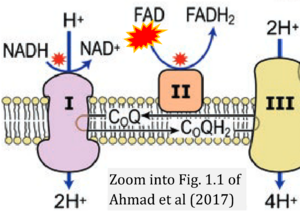Ahmad 2017 Springer, Cham
| Ahmad G, Almasry M, Dhillon AS, Abuayyash MM, Kothandaraman N, Cakar Z (2017) Overview and sources of reactive oxygen species (ROS) in the reproductive system. In: Agarwal A, et al (eds) Oxidative stress in human reproduction. Springer, Cham. https://doi.org/10.1007/978-3-319-48427-3_1. |
» Springer
Ahmad G, Almasry M, Dhillon AS, Abuayyash MM, Kothandaraman N, Cakar Z (2017) Springer, Cham
Abstract: Reactive oxygen species (ROS) are highly reactive molecules that are generated from oxygen metabolism. They can be free radicals or non-radicals. Free radicals are molecules that contain at least one unpaired valence electron at their outer shell, making them highly reactive and short lived [1]. Among all the ROS, superoxide anion (•O2 −), hydrogen peroxide (H2O2) and hydroxyl radicals (•OH) are the most known examples. Reactive nitrogen species (RNS), is the subclass of ROS that contain nitrogen compound [2]. Both ROS and RNS, when present in physiological amount, have important roles in normal cellular functions such as fighting against infection, regulating different intercellular signaling pathways and facilitating normal maturation and fertilization in reproductive systems [1, 3–7]. However, when ROS present in high concentration, overwhelming the antioxidant defense system, oxidative stress results, and this may lead to cellular dysfunction via lipid peroxidation, protein and DNA damages [8]. Due to such damaging effect on the cells, OS is related to many pathological conditions including infertility [3, 9].
• Bioblast editor: Gnaiger E
Correction: FADH2 and Complex II
- FADH2 is shown as the substrate feeding electrons into Complex II (CII). This is wrong and requires correction - for details see Gnaiger (2024).
- Gnaiger E (2024) Complex II ambiguities ― FADH2 in the electron transfer system. J Biol Chem 300:105470. https://doi.org/10.1016/j.jbc.2023.105470 - »Bioblast link«


